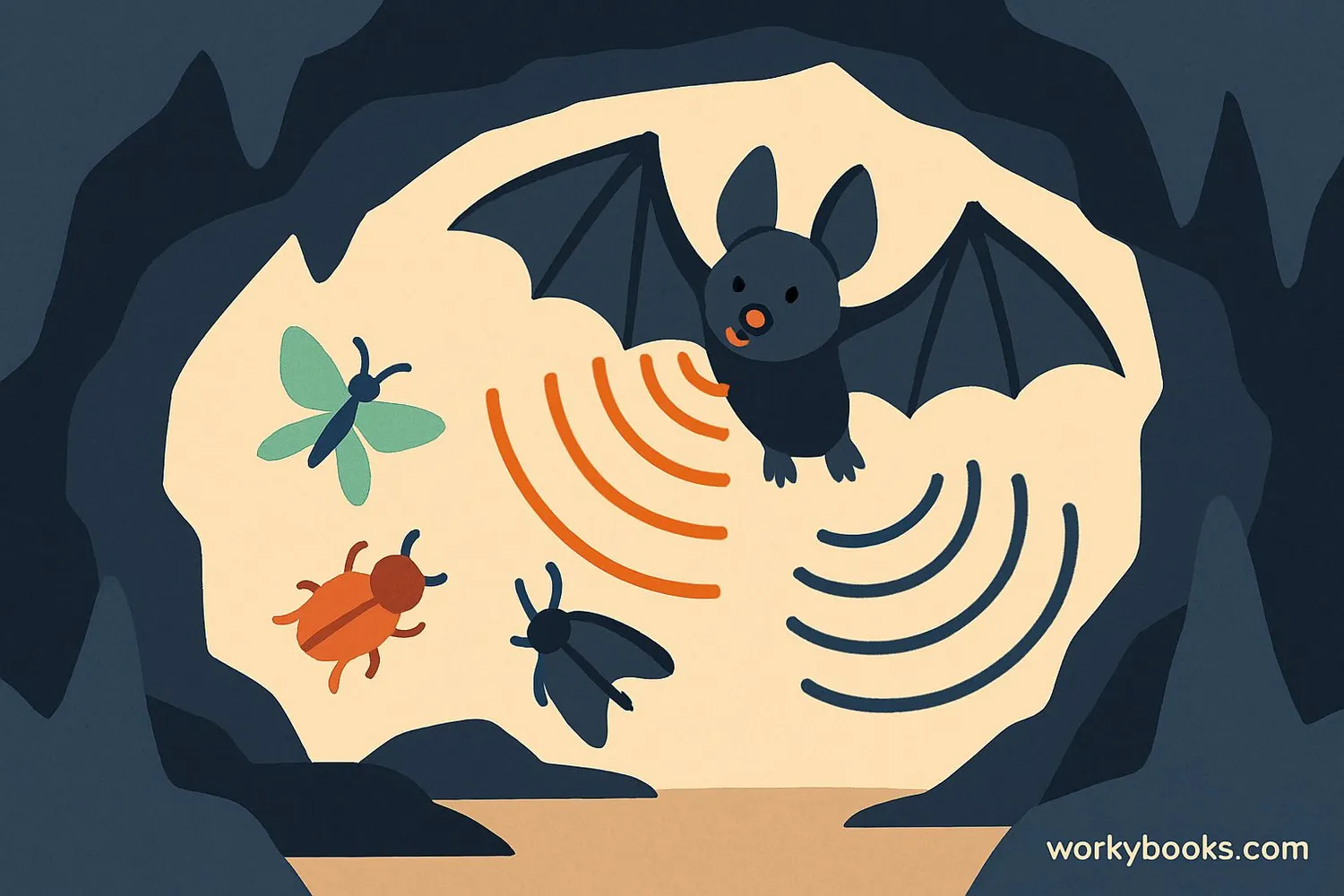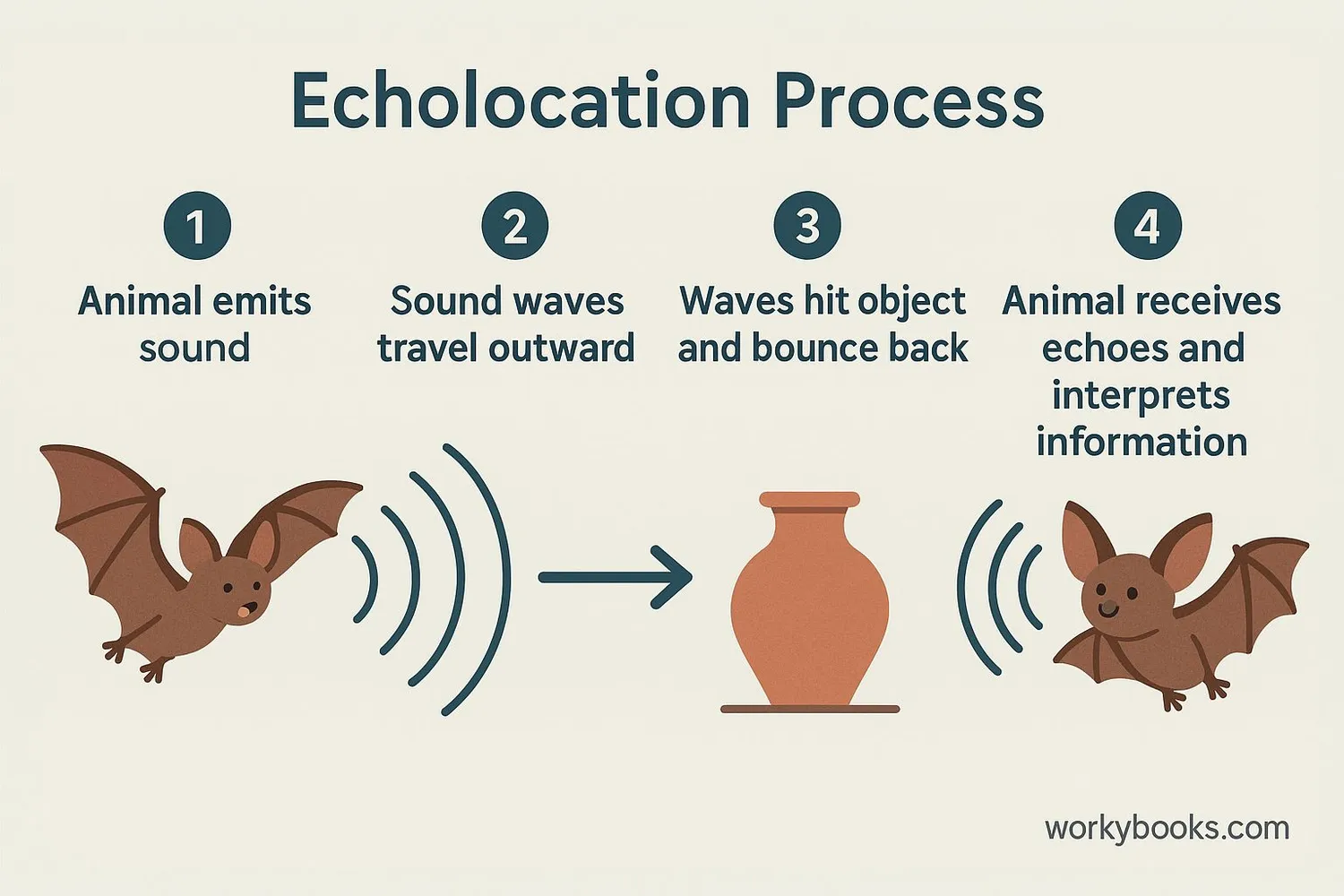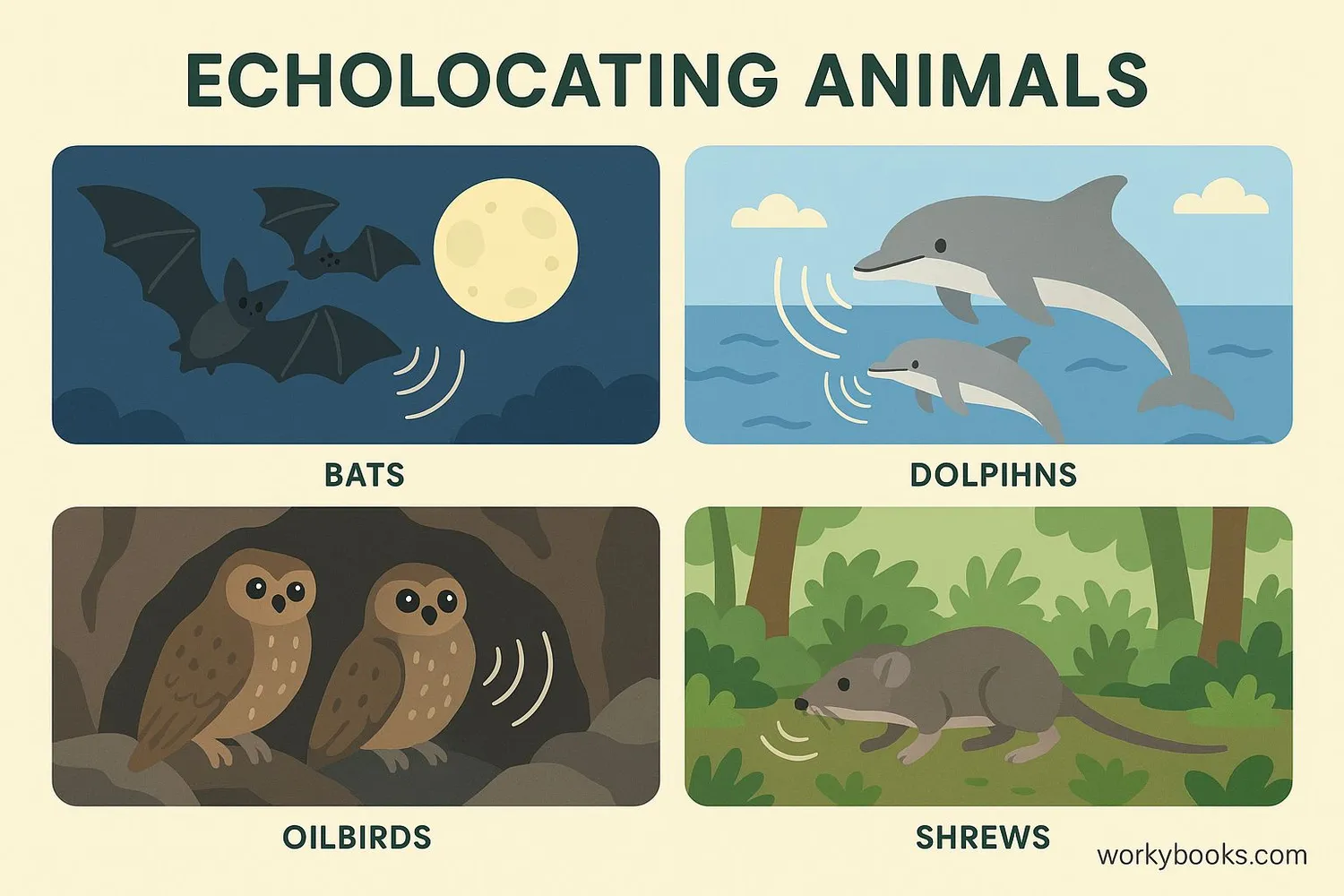Echolocation - Definition, Examples, Quiz, FAQ, Trivia
Discover how animals use sound to see in the dark!
What is Echolocation?

Echolocation is nature's amazing sonar system! It's how some animals use sound waves to "see" their surroundings, especially in the dark or murky water.
Think of it like shouting in a canyon and listening for your echo. Animals that use echolocation make special sounds (often too high-pitched for humans to hear) and listen for the echoes that bounce back. This helps them understand their environment without using their eyes!
This incredible ability is also called biosonar or animal sonar. It helps animals navigate, find food, and avoid obstacles even in complete darkness.
Science Fact!
Echolocation was discovered in 1938 by Donald Griffin when he studied how bats navigate in complete darkness!
How Echolocation Works

Echolocation works like a natural radar system. Here's the step-by-step process:
Sound Emission
The animal makes a clicking or squeaking sound, often at ultrasonic frequencies beyond human hearing
Wave Travel
Sound waves travel through air or water at about 767 mph (1,235 km/h) in air
Object Reflection
When waves hit an object, they bounce back toward the animal
Echo Reception
Special ears receive the echoes and the brain creates a mental map
The time it takes for the echo to return tells the animal how far away the object is. Louder echoes mean larger objects, and the direction of the sound reveals where the object is located. Some animals can even tell what an object is made of based on the sound!
Sound Science!
A bat can detect an object as thin as a human hair using echolocation! Their calls are 20 times higher than human hearing range.
Animals That Use Echolocation

Many amazing animals have developed this special ability. Here are some of nature's echolocation experts:
Bats
Over 1,300 species use echolocation to hunt insects at night
Dolphins
Use clicks and whistles to navigate murky waters and find fish
Oilbirds & Swiftlets
These birds use echolocation to navigate dark caves
Toothed Whales
Sperm whales, orcas, and porpoises all use biosonar
Shrews
Some small mammals use simple echolocation underground
Each animal has adapted echolocation to suit its environment. Bats produce sounds through their mouth or nose, while dolphins create clicks using special nasal sacs. The echoes they receive help them build a detailed picture of their world!
Echolocation Quiz
Test your echolocation knowledge with this fun quiz! Answer all 5 questions to see how much you've learned.
Frequently Asked Questions
Here are answers to some common questions about echolocation:
Fun Echolocation Trivia
Discover some amazing facts about echolocation in nature!
Superfast Processing
A bat's brain can process echoes in just 1/1000th of a second! This allows them to make split-second decisions while flying at full speed in complete darkness.
Military Inspiration
Submarine sonar technology was inspired by dolphin echolocation! Scientists studied how dolphins use sound to navigate, leading to improvements in human sonar systems.
Loud Calls
Some bats produce calls as loud as 140 decibels - that's louder than a jet engine at takeoff! Fortunately, these sounds are mostly ultrasonic and inaudible to humans.
Fish Detection
Dolphins can detect a fish the size of a golf ball from over 200 feet away using echolocation! They can even tell if it's their favorite type of fish.


